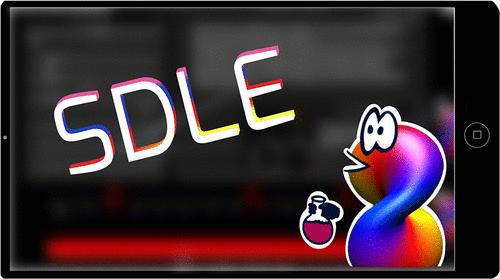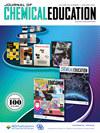A Digital and Interactive Tool to Learn 1H NMR Spectroscopy: The SpinDrops Learning Environment
IF 2.5
3区 教育学
Q2 CHEMISTRY, MULTIDISCIPLINARY
引用次数: 0
Abstract
Nuclear magnetic resonance (NMR) spectroscopy is one of the most important spectroscopy methods in modern chemistry, yet students need help learning and understanding its complex nature. Empirical investigations show that simulation and (interactive) visualizations can support students by offering new possibilities for investigating connections and direct effects of parameter changes. Therefore, this article introduces a digital and interactive learning environment that addresses students’ learning difficulties to facilitate the understanding of crucial 1H NMR background knowledge. The SpinDrops Learning Environment (SDLE) covers practically useful, basic concepts for interpreting a 1H NMR spectrum from a theoretical point of view. It includes new interactive visualizations and a dynamic and realistically simulated ppm-spectrum. To evaluate the role and influence of interactivity by parameter control regarding students’ learning processes and conceptual understanding, we designed two SDLE versions differing in the degree of interactivity and dynamics. We then asked N = 50 students to work with the learning environment in a pre-post study with questionnaires on affective constructs and a 1H NMR knowledge test on conceptual understanding. N = 12 students additionally took part in a think-aloud study. The results showed that students benefit from learning with the SDLE as their conceptual understanding and NMR-related interest, self-efficacy, and estimated knowledge increase significantly. Although the SDLE showed significantly positive effects on students’ learning results and processes, the difference in the degree of interactivity and dynamics inside the software only had a small impact, as revealed in the quantitative and qualitative data.

学习 1H NMR 光谱的数字互动工具:SpinDrops 学习环境
核磁共振(NMR)光谱学是现代化学中最重要的光谱学方法之一,但学生在学习和理解其复杂性方面需要帮助。经验调查表明,模拟和(交互式)可视化可以为学生提供帮助,为研究参数变化的联系和直接影响提供新的可能性。因此,本文介绍了一种数字互动学习环境,它能解决学生的学习困难,促进对关键的 1H NMR 背景知识的理解。SpinDrops 学习环境 (SDLE) 涵盖了从理论角度解释 1H NMR 图谱的实用基本概念。它包括新的交互式可视化和动态逼真的模拟 ppm 光谱。为了评估参数控制的互动性对学生学习过程和概念理解的作用和影响,我们设计了两个在互动性和动态程度上不同的 SDLE 版本。然后,我们要求 N = 50 名学生在学习环境中进行前后期研究,并就情感建构和概念理解方面的 1H NMR 知识测试进行问卷调查。此外,还有 12 名学生参加了思考-朗读研究。结果表明,学生从使用 SDLE 的学习中获益匪浅,他们对概念的理解、与 NMR 相关的兴趣、自我效能感和估计知识都有显著提高。虽然 SDLE 对学生的学习结果和过程产生了明显的积极影响,但从定量和定性数据中可以看出,软件内部交互性和动态程度的差异只产生了很小的影响。
本文章由计算机程序翻译,如有差异,请以英文原文为准。
求助全文
约1分钟内获得全文
求助全文
来源期刊

Journal of Chemical Education
化学-化学综合
CiteScore
5.60
自引率
50.00%
发文量
465
审稿时长
6.5 months
期刊介绍:
The Journal of Chemical Education is the official journal of the Division of Chemical Education of the American Chemical Society, co-published with the American Chemical Society Publications Division. Launched in 1924, the Journal of Chemical Education is the world’s premier chemical education journal. The Journal publishes peer-reviewed articles and related information as a resource to those in the field of chemical education and to those institutions that serve them. JCE typically addresses chemical content, activities, laboratory experiments, instructional methods, and pedagogies. The Journal serves as a means of communication among people across the world who are interested in the teaching and learning of chemistry. This includes instructors of chemistry from middle school through graduate school, professional staff who support these teaching activities, as well as some scientists in commerce, industry, and government.
文献相关原料
| 公司名称 | 产品信息 | 采购帮参考价格 |
|---|
 求助内容:
求助内容: 应助结果提醒方式:
应助结果提醒方式:


